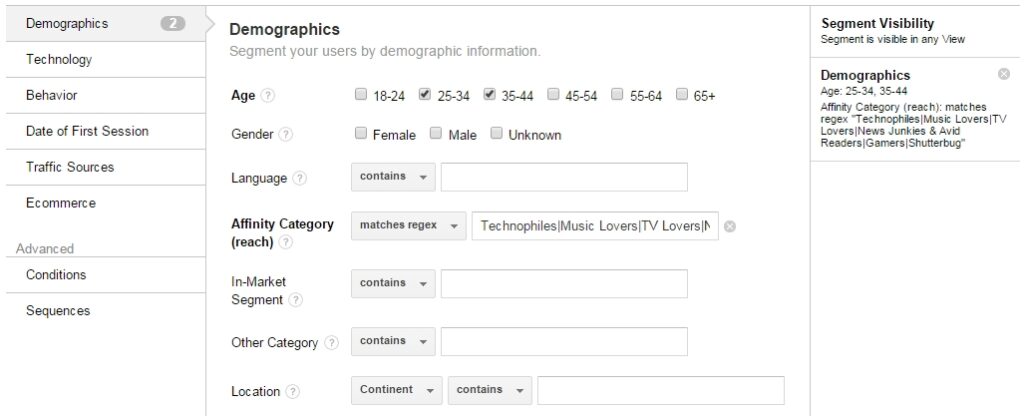Filters
Content Type
Topic
5 Ways to Effectively Track MQLs

Leads are the lifeblood of any business. The best way to turn them into customers is through marketing. However, it can be challenging to determine which leads are qualified and which ones aren't. Identifying and targeting marketing qualified leads (MQLs) is an essential part of a successful marketing strategy.
However, before diving into tips for tracking your MQLs, it's crucial that you take a moment to understand what they are and why they matter so much.

What are MQLs?
Marketing qualified leads (MQLs) are leads that have demonstrated interest in your business but haven't yet purchased from you. They are leads that have expressed some level of interest in your product or service - from a simple inquiry to a sign-up for your newsletter.
Why are MQLs Relevant?
MQLs are critical to a successful marketing strategy because they provide a source of customers that are already interested in your business. These are individuals who have:
- Added items to the shopping cart (then likely abandoned it for one reason or another)
- Downloaded a free eBook
- Filled out one of your online forms
- Have clicked on an ad to find your website
- Have contacted you to request more information
- Have repeatedly visited your website
- Provided you with an email address for a newsletter/mailing list
- Used your software demo
They're an excellent start for building your customer base, and they also help you understand your audience.
With the right nurturing, MQLs are a golden opportunity to convert leads into qualified sales leads and eventually customers.
5 Steps to Effectively Track MQLs
Tracking MQLs stands out as one of the most critical tasks in online marketing. If you're not doing it right, it could be costing you quality leads and money. Fortunately, there are several ways you can start tracking MQLs.
1. Define Your MQLs
The first step in tracking MQLs is to define them. At this point, you're not looking for leads that are actively searching for your product or service. Instead, you're looking for leads that have expressed interest in your business and need more information.
You need to take the time to sit down and outline what an MQL looks like for your brand. One of the easiest ways to do this is to create user personas. User personas are fictitious representations of the people who will use your product or service. These can be used to understand your audience's needs and help define the behaviors your leads will engage in once they've expressed interest.
2. Track Demographic Data
Once you've defined your MQLs, the next step is to gather demographic data. This is an essential part of the process because it helps you understand the types of people who are interested in your products or services.
Demographic data typically includes:
- Age
- Gender
- Location
- Education
- Occupation
- Income
To gather this data, you can use a variety of sources such as Google Analytics or Facebook Audience Insights.

This information can then be used to further define your MQL and help you plan and create your ideal customer experience.
3. Track Behavioral Patterns
While demographic data is important to track, it's only part of the picture. The other part is behavioral data. Behavioral data is defined as the actions your leads engage in that help you understand how they interact with your brand.
You can measure and track a variety of behavioral patterns, including:
- Website visits
- Time spent on your website
- Pageviews
- Lead forms filled out
- Leads that are added to your email list
Again, this data is important because it helps you understand your audience and their needs. It can also help you create more targeted content and lead nurturing campaigns.
4. Analyze Engagement
Engagement is the key to successful marketing. The more engaged your leads are, the more likely they are to take action, such as buying from you or signing up for your newsletter.
To better understand how engaged your leads are, you can use a variety of tools to track their activity.
Analytics tools are a great way to get an overall look at how your leads are engaging with your brand. For example, you can use Google Analytics to see how many visitors you have, which pages they've viewed, and which links they've clicked on.
You can also use tools like Google Search Console to see how many people are searching for your brand.
You can also use social media to measure engagement. For example, you can use Twitter and Facebook to see how many people follow you, like your posts, or comment on your posts.

5. Develop a Lead Scoring System
Lead scoring is a great way to track and analyze your leads. A lead scoring system is a scoring model that assigns a numerical value to a lead based on specific criteria.
This could mean assigning a value based on their behavior or based on specific demographics - or even a combination of each of the above.
Your lead scoring system will help you define exactly where on the lead qualification scale they fall. The more points in their favor, the higher their quality. This allows you to spend your time and money more effectively nurturing the right set of individuals, ensuring that they move through the sales funnel and ultimately become customers.
Improve Your Lead Quality with Smart Microforms from Hushly
Marketing qualified leads (MQLs) are a treasure-trove for any business, but they can be elusive for marketers. Tracking them can be a challenge, but there are ways to make it easier.
Improving your lead quality is a critical part of any marketing strategy, and if you've been struggling, Hushly can help.
One of the easiest ways to turn your potential leads away is to present them with long, complicated forms that ask too much of them. Hushly's lead form builder can help you create forms that are easy to fill out and gives you the tools you need to make sure your leads are qualified for your business.
For example, you can use Hushly's lead form builder to make simple microforms that ask for the bare minimum of information. From there, you can follow up with your lead, get to know them better, and start building genuine relationships with each one.
Ready to get started? Then request your demo today!
The post 5 Ways to Effectively Track MQLs appeared first on Hushly.



